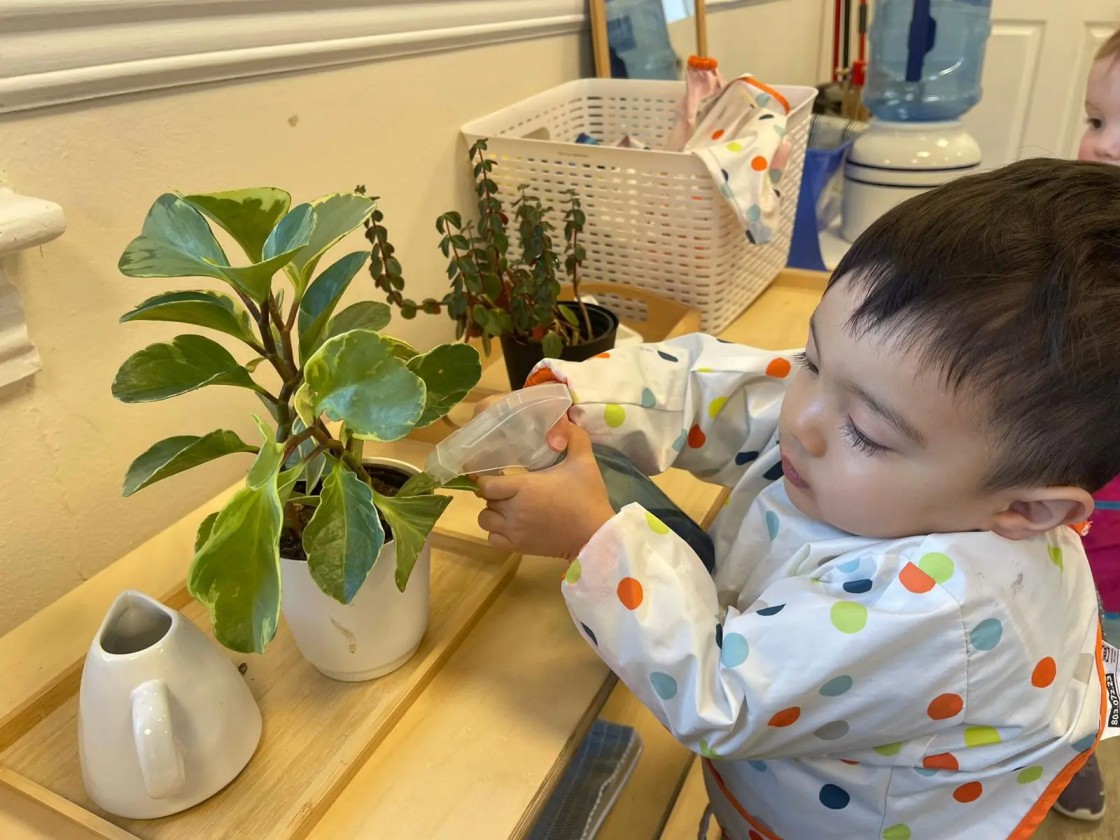This comprehensive guide explores the optimal age range for Montessori Casa programs, examining why children aged 2.5 to 6 years thrive in this educational environment. The guide addresses common parent concerns, discusses developmental readiness factors, and explains how the mixed-age classroom structure benefits all learners. Whether families are considering early enrollment or wondering if their older child would benefit, this article provides the insights needed to make the best educational choice.
Parents often recognize the moment when their toddler meticulously arranges toy cars by size or insists on buttoning their own jacket despite the time it takes. These behaviors signal that children may need something more challenging than traditional daycare. Montessori educators witness these displays of budding independence daily – they serve as clear indicators that children are ready for the Montessori Casa environment.
The Critical Window: Understanding Montessori Casa Age Requirements
Children’s brains undergo extraordinary development between the ages of 2.5 and 6, with 90% of brain development occurring during these crucial years. This period represents a critical window where cognitive, social, and emotional foundations are established that will influence how children learn, think, and interact with the world throughout their lives.
The Montessori Casa program in Markham differs significantly from traditional preschool settings. It’s specifically designed to capitalize on “sensitive periods” when children naturally absorb specific skills with remarkable ease. During these windows of opportunity, children can master complex tasks that might prove challenging at later developmental stages.
However, not every 2.5-year-old demonstrates readiness, and not every 6-year-old has missed optimal timing. The most successful outcomes occur when developmental readiness aligns with appropriate educational opportunities.
Decoding the Montessori Casa Program Structure
What Makes Casa Different from Traditional Preschool
Traditional preschools often feature age-segregated classrooms where children of the same age participate in teacher-directed activities simultaneously. In contrast, Casa classrooms present a different dynamic: mixed-age environments where four-year-olds teach three-year-olds water pouring techniques, five-year-olds explore mathematical concepts through sensory materials, and 2.5-year-olds develop fine motor skills through purposeful activities.
This structure represents orchestrated freedom rather than chaos. The mixed-age environment creates natural learning opportunities where younger children learn through observation and older children cement their knowledge by teaching others. This dynamic mirrors family structures where siblings learn from each other across developmental stages.
The Science Behind the 2.5 – 6 Year Age Range
Maria Montessori developed this age range through decades of careful child observation, identifying consistent patterns in child development. Between ages 2.5 and 6, children experience what she termed “sensitive periods” – times when they demonstrate magnetic attraction to specific types of learning.
The order-seeking phase typically peaks around ages 2.5 – 4, explaining why toddlers become distressed by routine changes. Their developing brains crave predictable patterns to make sense of their environment. Language acquisition during this period occurs naturally and effortlessly, with children absorbing vocabulary, grammar rules, and even multiple languages with remarkable ease.
Addressing Common Parent Concerns About Montessori Casa Age Requirements
“Is a 2.5-Year-Old Too Young for Structured Learning?”
This concern often stems from a misunderstanding of Montessori’s “structure.” The approach doesn’t force toddlers into academic desk work. Instead, structure emerges from carefully prepared environments and consistent routines.
When 2.5-year-olds choose activities from organized shelves, return materials to their designated places, and follow consistent daily sequences, they experience beneficial structure that supports natural development. In Montessori education, structure and freedom complement rather than oppose each other.
“Will a 4-Year-Old Be Bored in a Mixed-Age Environment?”
This concern typically proves unfounded, as four-year-olds often become natural leaders and teachers. Children explaining concepts to younger classmates engage in powerful learning experiences that reinforce their own understanding while developing leadership skills.
Additionally, Montessori materials grow with children. Materials that initially attracted three-year-olds for basic exploration become tools for advanced learning at age five, enabling deeper investigation of concepts like volume and measurement.
“What About Children Starting at 5 or 6 Years Old?”
Later starters can absolutely succeed in Casa programs, though their experiences differ from those of younger entrants. These children often possess developed social skills and handle complex instructions effectively, allowing them to engage with advanced materials quickly.
However, they miss foundational experiences that shape the Montessori mindset over time. Five or six-year-old beginners have fewer opportunities to develop the deep concentration and internal motivation that typically result from years in Montessori environments.
Beyond Age: Essential Readiness Factors for Montessori Casa Success
Age represents just one factor in determining Casa readiness. Experienced educators have observed mature 2.5-year-olds adapt beautifully, while some four-year-olds struggle because they weren’t ready for Casa independence expectations.
Emotional and Social Readiness Markers
Successful Casa students can typically handle brief separations without extreme distress and show interest in other children, even without sophisticated social interaction skills. These indicators often prove more significant than chronological age.
Emotional regulation develops rapidly during these years. While perfection isn’t expected, children benefit from a basic ability to be comforted when upset and some capacity for expressing needs, whether through words, gestures, or simple expressions.
Physical Development Milestones
Montessori environments require certain physical capabilities. Children need sufficient fine motor skills for material manipulation and gross motor skills for safe classroom navigation.
Most importantly, they need stamina for the three-hour work cycle central to Montessori education. This doesn’t mean sitting still for three hours, but rather maintaining energy and attention for meaningful activity engagement over extended periods.
Why Quality Casa Programs Excel Across All Age Groups
Exceptional Montessori programs refuse to treat age as a rigid capability indicator. The best educators have observed three-year-olds working with advanced materials because they demonstrated readiness, while gently supporting five-year-olds through foundational exercises they may have missed.
Comprehensive Age Accommodation (2.5 – 6 Years)
Quality classrooms serve the full Casa age range simultaneously, creating rich peer learning opportunities. However, they recognize different developmental needs across ages. Daily schedules typically include large group activities that bring everyone together alongside individual work time, allowing children to pursue personal interests and appropriate challenges.
Many programs offer flexible entry points throughout the year, recognizing that not every child’s developmental timeline aligns with traditional September starts. Children shouldn’t wait to begin their Montessori journey if they demonstrate readiness at other times.
Personalized Learning Plans for Every Developmental Stage
Experienced, trained teachers become crucial in this process. Quality educators carefully observe each child, noting interests, challenges, and developmental patterns. This information shapes individualized learning plans that evolve as children grow and develop.
A 2.5-year-old might spend months perfecting practical life activities, while a four-year-old ready for academic challenges quickly progresses through early literacy materials. Both children receive support precisely matched to their current developmental stage.
Expert Montessori-Certified Educators
Quality programs employ teachers who have completed extensive training in child development, Montessori philosophy, and specific material presentation techniques. These educators understand subtle differences between three-year-old concentration and five-year-old focus, knowing how to support both effectively.
The Long-Term Impact: How Entry Age Affects Educational Journey
Benefits of Earlier Enrollment (2.5 – 3.5 years)
Early Casa participants develop what educators term “Montessori characteristics” – deep concentration, internal motivation, and confident independence. They internalize classroom rhythms and expectations over time.
By ages five or six, these children often mentor newcomers naturally, reinforcing their learning while building leadership skills. They transition to elementary education, understanding how to choose work independently and manage time effectively.
Advantages of Strategic Later Entry
Older starters contribute different strengths to the classroom community. They often possess developed language skills and handle complex instructions immediately. Their social awareness might be more sophisticated, helping them navigate peer relationships with greater ease.
These children often progress through foundational materials efficiently, since their physical development allows them to handle fine motor tasks that challenge younger children.
Making the Right Choice for Families
The ideal Casa starting age isn’t solely about chronological age – it encompasses developmental readiness, family circumstances, and finding an appropriate educational fit for each unique child.
While the 2.5 – 4 range offers maximum sensitive period benefits, children starting anywhere within the Casa age span can thrive with proper support. What matters most is choosing programs that understand child development and adapt to meet children where they are developmentally.
Quality Montessori programs like the ones being offered at First Academy believe every child deserves educational experiences that honor their individual timeline while providing appropriate growth challenges. Experienced teams help families determine Casa readiness regardless of chronological age, inviting families to observe classrooms, meet teachers, and witness how children across the age spectrum flourish in carefully prepared environments.
Ultimately, the best Montessori Casa age occurs whenever individual children demonstrate readiness. Quality programs support families in recognizing and nurturing that readiness throughout the developmental journey, ensuring each child receives the foundation for lifelong learning success.





